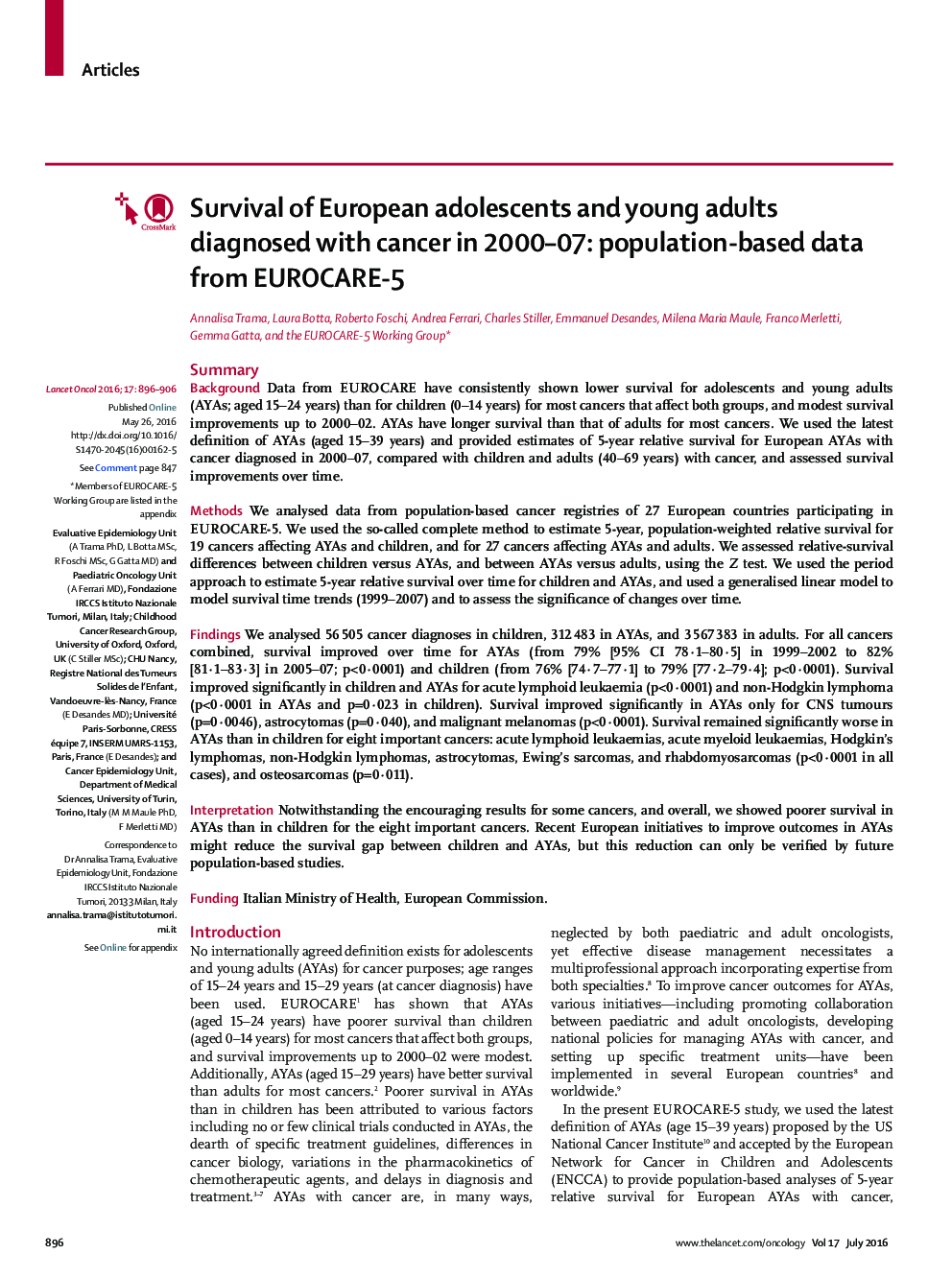| کد مقاله | کد نشریه | سال انتشار | مقاله انگلیسی | نسخه تمام متن |
|---|---|---|---|---|
| 3993152 | 1258838 | 2016 | 11 صفحه PDF | دانلود رایگان |

SummaryBackgroundData from EUROCARE have consistently shown lower survival for adolescents and young adults (AYAs; aged 15–24 years) than for children (0–14 years) for most cancers that affect both groups, and modest survival improvements up to 2000–02. AYAs have longer survival than that of adults for most cancers. We used the latest definition of AYAs (aged 15–39 years) and provided estimates of 5-year relative survival for European AYAs with cancer diagnosed in 2000–07, compared with children and adults (40–69 years) with cancer, and assessed survival improvements over time.MethodsWe analysed data from population-based cancer registries of 27 European countries participating in EUROCARE-5. We used the so-called complete method to estimate 5-year, population-weighted relative survival for 19 cancers affecting AYAs and children, and for 27 cancers affecting AYAs and adults. We assessed relative-survival differences between children versus AYAs, and between AYAs versus adults, using the Z test. We used the period approach to estimate 5-year relative survival over time for children and AYAs, and used a generalised linear model to model survival time trends (1999–2007) and to assess the significance of changes over time.FindingsWe analysed 56 505 cancer diagnoses in children, 312 483 in AYAs, and 3 567 383 in adults. For all cancers combined, survival improved over time for AYAs (from 79% [95% CI 78·1–80·5] in 1999–2002 to 82% [81·1–83·3] in 2005–07; p<0·0001) and children (from 76% [74·7–77·1] to 79% [77·2–79·4]; p<0·0001). Survival improved significantly in children and AYAs for acute lymphoid leukaemia (p<0·0001) and non-Hodgkin lymphoma (p<0·0001 in AYAs and p=0·023 in children). Survival improved significantly in AYAs only for CNS tumours (p=0·0046), astrocytomas (p=0·040), and malignant melanomas (p<0·0001). Survival remained significantly worse in AYAs than in children for eight important cancers: acute lymphoid leukaemias, acute myeloid leukaemias, Hodgkin's lymphomas, non-Hodgkin lymphomas, astrocytomas, Ewing's sarcomas, and rhabdomyosarcomas (p<0·0001 in all cases), and osteosarcomas (p=0·011).InterpretationNotwithstanding the encouraging results for some cancers, and overall, we showed poorer survival in AYAs than in children for the eight important cancers. Recent European initiatives to improve outcomes in AYAs might reduce the survival gap between children and AYAs, but this reduction can only be verified by future population-based studies.FundingItalian Ministry of Health, European Commission.
Journal: - Volume 17, Issue 7, July 2016, Pages 896–906